Camera lens specifications might sound like another language for beginner photographers or those interested in their first purchase of a camera kit. Most of the time people simply don’t know their meanings which is what leads them to make a bad decision when buying a lens.
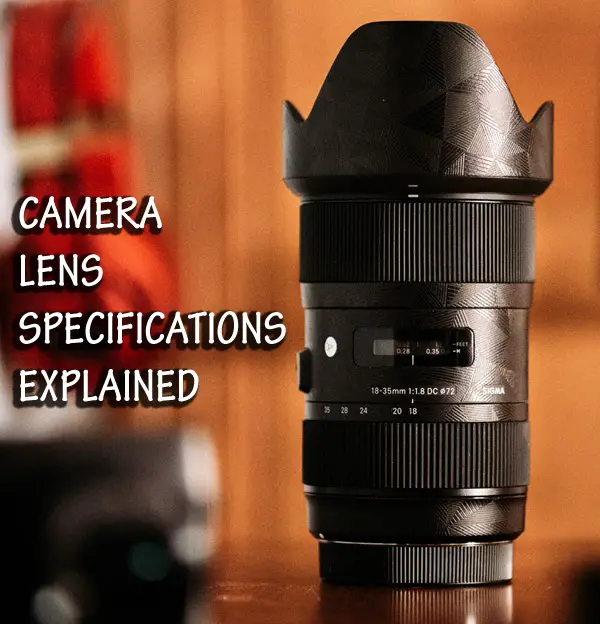
In this article I will define all the camera lens specifications you need to be familiar with so that you know to buy the correct lens and when to use which lens.
Camera lens specifications include the various types of lenses, focal lengths, aperture range, thread sizes, mounts, lens speed, sensor compatibility, model numbers, stabilization types, focusing motors, special materials.
There is a lot to cover so let’s get started.
First lets define a camera lens. A camera lens is an optical body that attaches to the camera body. Some lenses are removable, whereas others are permanently attached to the camera frame. The lens is the most significant feature on the digital camera, aside from the image sensor.
Categories of Lenses
There are two main categories of camera lenses:
Prime Lenses
A prime lens is a lens with a specified focal length that cannot be zoomed in our out. The focal length is the difference between both the lens’s point of convergence (optical center of lens) and the camera’s sensor.
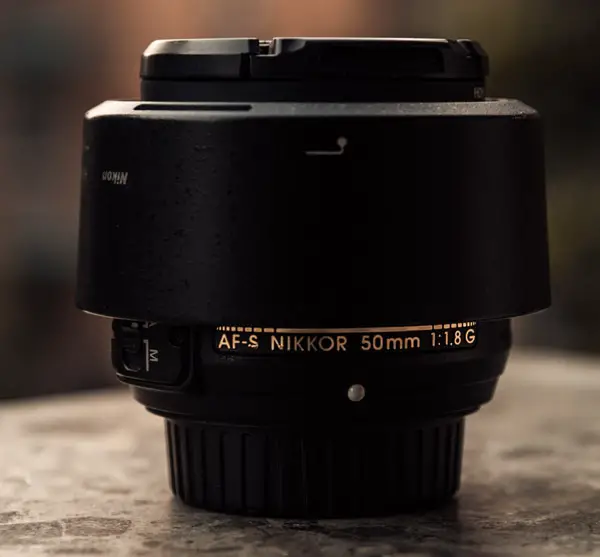
Prime lenses can be easily identified because they have a single number focal length, for example 85mm, and not a range such as 35mm-75mm.
Apertures on prime lenses can be small or large. Maximum apertures on prime lenses normally range from f/2.8 to f/1.2.
Zoom Lenses
A zoom lens has a more complicated mechanism compared to a prime lens as it is the one that can keep focus as the focal length changes. This is why a prime lens is often narrower than a zoom lens.
The great thing about zoom lenses is they offer a lot of flexibility as the focal length can be adjusted by the photographer when he or she needs to get close without having to physically get close to the object that they are trying to capture.
How do you read camera lens specs?
The large range of specs and features available when buying a lens for your camera is enough to make someone lift their hands in confusion and return to using their smartphone. Don’t be that person. It is not that difficult.
SLRs and mirroless camera systems are worthwhile investments because they deliver high-quality images that mobile cameras simply cannot equal due to their specifications. It’s not tough to find out which kind of lens you need if you know what you’re looking for. And you can only know what you are looking for if you truly understand what camera lens specifications mean.
Let’s jump right in and get all camera lens specifications explained. All you need to do to read the lens specifications is look at the letters and numbers on the barrel of the lens.
What is the aperture specification?
The aperture on a lens works similarly to your eyes, opening and closing in response to the amount of light you receive. The peak aperture value of your camera lens, measured in “f-numbers” or “f-stops,” is normally represented in a very similar way on any lens. Keep in mind that the presentation of aperture size can vary, for example, f/2.8 can be shown as “1:2.8,”—but the figures show the same thing: the peak aperture of your camera lens.
Lenses with a low number single aperture or low number aperture range are faster as they allow more light in, and are also better suited for low light photography.
Alternatively, you will see an aperture range, such as f/3.5-5.6 if you’re using a zoom lens. Here the two aperture values reflect the widest aperture possible within the zoom range of your camera. The largest opening will change depending on what focal length of the zoom lens you are using. You need to be aware of this as you will not always be able to use the widest aperture, its just how the optics of a zoom lens work.
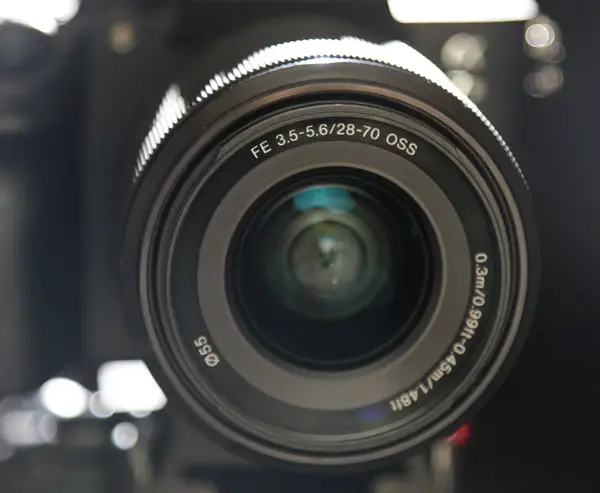
Since we already mentioned the term “f-stop” above, let’s go ahead and define it. F-stop also known as “f-number” represents the ratio of the lens’ focal length to the diameter of the entrance pupil, i.e. it represents the fraction of the aperture opening. However, to make things more clear, we can define it as a number that the camera displays whenever you change the size of the lens aperture. In fact, the letter “f” stands for focal length and usually you can see it written like this: f/2.8, f/4, f/5.6, f/8, f/11, etc. Based on the lens, the aperture size will most often range between f/1.0 and f/32.
Here is a quick video from Jared Polin on lens types and aperture:
What is the filter size specification?
Filters are the attachments usually made of glass for the purpose of improving or modifying what the camera sees while filter size is the inner diameter of the lens where they fit. There are threads on which this filter is placed by screwing on. Usually, this filter size is written on the front of a lens expressed in millimeters (mm) and can have the marking “Ø” next to it.
Here are some of the most common filter sizes: 30.5 mm, 35.5 mm, 37 mm, 39 mm, 40.5 mm, 43 mm, 46 mm, 49 mm, 52 mm, 55 mm, 58 mm, 62 mm, 67 mm, 72 mm, 77 mm, 82 mm, 86 mm, 95 mm, 105 mm, 112 mm 122 mm and 127 mm. However, if you have a DSLR camera then chances are that you would need a filter sized somewhere between 49 mm and 77 mm as they are the most common ones for DSLR cameras.
What does camera lens “mm” mean?
Each lens has a number with “mm” written on it. The “mm” is focal length, and focal length has a unit of millimeters, where a mm is 1/10 of a centimeter (cm) and 1/1000 of a meter (m). In camera lens specifications, millimeters play a significant role- they are used often. For people living in North America, this is more difficult to understand as the American measurement system is imperial and not metric. 1 mm is 0.03937 inches.
Many lenses are available with a variable focal length range, such as from 18 to 55mm, and some lenses have a single focal length (prime lenses). Zoom lenses are basically lenses with an adjustable focal length that can zoom into and out to bring you closer or far from a subject.
While many people especially beginners don’t spend much time thinking about focal length because it involves the realm of technological data, something many people choose to ignore, knowing the focal length of your lens is important for getting the best out of the lens.
What are focal lengths?
Lenses are available in different sizes, where the focal length in millimeters determines the lens type. Below you can find the different lens sizes, their type and also their usage in photography.
| Lens size | Lens Type | Usage |
| 4mm – 14mm | Fisheye | Extremely wide angles |
| 14mm – 35mm | Wide angle | Landscape/Cityscape |
| 35mm – 85mm | Standard | Portrait, street photography |
| 85mm – 135mm | Short telephoto | Street, travel photography |
| 135mm+ | Medium telephoto | Sports, action, animal photography from a distance |
| 300mm+ | Super telephoto | Nature, astronomy, events |
| 35mm – 200mm | Macro | Close-up, portraits |
However, out of all of the lenses listed above, wide-angle lenses and telephoto lens are the most common ones. Let’s see why.
Telephoto and Wide-angle Lenses- specs explained
Wide-angle lenses have a shorter focal length than telephoto lenses that have a larger focal length. A focal length of 35mm or less is common for wide angle lenses. The focal length of telephoto lenses starts around 70 mm and up.
Wide-angle lenses capture a greater part of the scene, whereas a telephoto lens just captures a small portion. Both have their benefits based on your needs.
Lenses of different focal lengths serve a variety of purposes. If you’re photographing animals, for instance, a lens with a larger focal length (at minimum 300mm) would allow you to go and get nearer to your object without frightening it away. A lens with a wide angle can be preferable when photographing buildings because it helps you to see the entire object where you are standing without having to walk hundreds of feet back.
When is it appropriate to use a wide-angle lens?
While wide angle lenses are necessary for shooting scenes which can be measured in miles, such as landscapes, a lens with a wide angle can overstate your object’s characteristics, making it unsuitable for portrait photography. The object’s features, however, tend to straighten out at 70mm. Larger focal lengths make faces seem larger. When the value just goes over 100mm, the result will be a bit odd, object’s profile starts to look big.
When is it appropriate to use a telephoto lens?
Telephoto lenses are particularly useful when you can’t walk close to the object, but they can also be used for other purposes, such as portrait photography. It is recommended to shoot portraits with a 70-85mm lens.
Since lenses induce various forms of distortions at different focal lengths, the focal length is critical for portrait photography. It’s impossible to think that you will understand how this concept works until you use this type of lenses yourself. That’s why go and take some time to take experiment with both the lenses at various focal lengths. In this way, you’ll be able to choose the right one.
If you need more explanation below is a video on how different focal lengths change your image by Wolf Amri:
Full frame and crop lens specification
Full frame and crop are two terms which apply to lenses but actually have to do with camera sensors. To make things very simple, a full frame DSLR sensor is equal to the size of a 35mm film frame of an old SLR whereas a crop frame sensor is smaller than a 35mm. It can be even half the size.
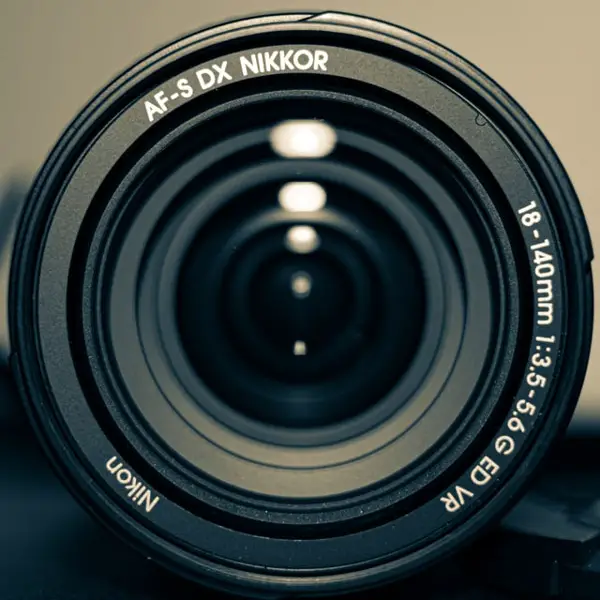
Lenses are labeled so that you know how they will function on cameras with full frame sensors and crop frame sensors. For example a Nikon lens labeled as “FX” is made for full frame cameras but it will also work on crop frame cameras. The difference is on a crop frame camera it will not produce a crop. A “DX” Nikon lens is made for a crop frame camera only.
For Canon, the labels are different. Full frame lenses are labeled “EF” and crop frame lenses are labeled “EF-S”. EF lenses can be used on both types of cameras. EF-M lenses are made for mirrorless cameras.
The one good thing about crop frame lenses is they have a smaller image circle which translates into less material needed (cheaper price) and smaller size (portability).
MACRO specification
The designation “Macro” found on the barrel of some lenses simply means that the lens is capable of working close to the subject unlike other types of lenses. This can mean the lens is practically touching the subject such as an insect.
Without getting too technical, a macro lens is able to focus from infinity to 1:1 magnification, which just means same size of object displayed on the sensor as in real life. Macro lenses often have a focal range of 90mm to 105mm and a fast aperture around 2.8.
Stabilization specification
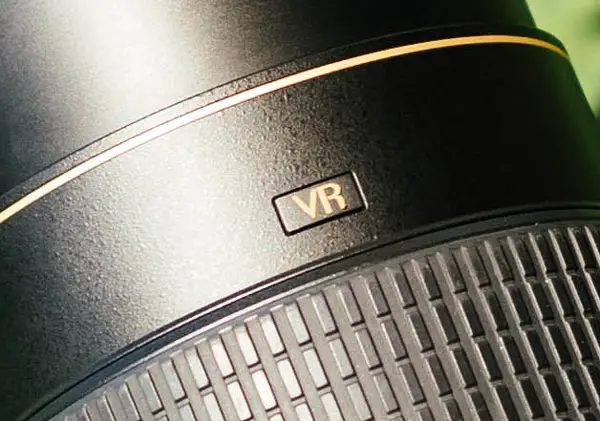
The type of stabilization present in a camera lens is often written on the barrel and the actual wording is brand specific. For example, Nikon uses the label “VR” for vibration reduction, Sigma uses “OS” for optical stabilization, Canon uses “IS” for image stabilization. Sony has yet another type of lingo with “OSS” for optical steady shot.
Focus specification
Some lenses may be labeled AF for autofocus lens or MF for manual focus lens.
In addition to a switch on the camera body, lenses may have a manual focus/autofocus switch on the barrel which can be labeled AF/MF or M+A/M. The M+A/M actually disengages the gearing and driveshaft in the lens.
Motor type specification
When you see these labels, they are referring to the type of focusing motor inside the lens, which is only applicable to autofocus lenses. Again this is lens brand specific and includes Canon’s USM- Ultra Sonic Motor which focuses faster than a regular motor, Nikon’s SWM- Silent Wave Motor which is faster and quieter, Sigma’s HSM- Hyper Sonic Motor which is more compact, faster and quieter, Sony’s SSM- Super Sonic Motor which is faster and nearly silent.
Glass specification
Specifications such as low dispersion (LD), extra dispersion (ED), special low dispersion (SLD), extra refractive (XR), extraordinary low dispersion (ELD), and ultra low dispersion (ULD) all refer to the quality of the glass in the lens. All of these tell you that the glass is better than in a standard lens.
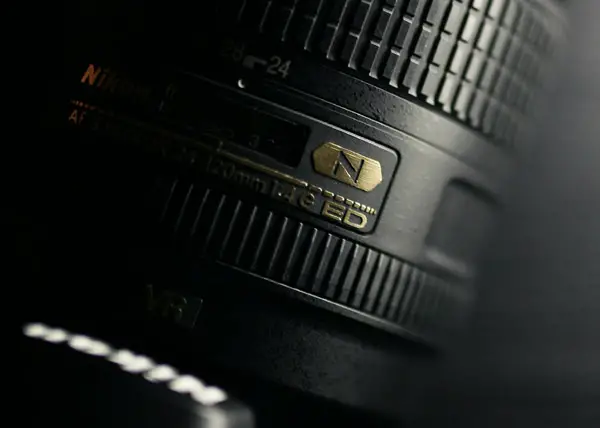
These types of lenses reduce chromatic aberration which improves photo quality. They do so by using a specialized chemical makeup of the glass used in construction of the lens.
ASPH specification
The label ASPH on a lens refers to the lens being aspherical, or more exactly, containing an element that is aspherical. This basically means “not-spherical” and refers to the profiles of the lens not being part of a sphere. These lenses provide you with sharper image and help reduce chromatic aberrations.
Wrapping Up
Camera lenses are used to improve the quality of photographs. These lenses are available with different specifications in terms of focal length, filter size, aperture, glass type, motor specs, stabilization and focus. All these characteristics are worth considering before buying a lens.
I hope that this article has made the process of label identification easier for you and the next time you are in a camera store you will better understand why some lenses are more expensive than others.
Click on the following link to read our guide to camera lens and humidity.









3 comments